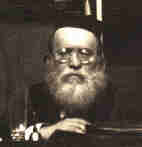 |
Hadrash Ve-Haiyunby the Reisha Rav, HaGoan Rav Aaron Levine Tz"lElucidated and Adapted by Efraim Levine |
 |
Hadrash Ve-Haiyunby the Reisha Rav, HaGoan Rav Aaron Levine Tz"lElucidated and Adapted by Efraim Levine |
Vayakel
Dedicated in Honor of
Rabbi and Mrs. Eliezer Silver
and Rabbi and Mrs. Stuart Wahrsager
upon the marriage of their children
Shani to Meir
To Dedicate Please Contact Hadrash Ve-Haiyun
Betzalel made the aron of shittim wood (Shemos 37:1)
Concerning the appurtenances of the mishkan we find only three admonitions. First with regard to the aron the posuk instructs us to insert staves into the rings and warns us that they not be removed from it (Shemos 25:15). Second, the posuk warns that the choshen shall not be detached from upon the eiphod (Shemos 28:28). Third, with regard to the me'il, the posuk instructs us that its opening should have a border all around and warns that it may not be torn (Shemos 28:32). It is noteworthy that the admonition of the choshen and me'il are repeated in parshas pekudei when the Torah records the actual fashioning of these appurtenances (Shemos 39:21,23). However in parshas vayakel, when the Torah records the construction of the aron, no mention is made of the admonition that the staves not be removed. The latter omission requires explanation.
Let us suggests a homiletic answer based upon the following two insights.
With regard to the aron there is another peculiarity. We are aware that Betzalel was the master craftsman who was appointed to construct the utensils of the mishkan. Yet, concerning almost all appurtenances the Torah simply states that "he made." Betzalel's name is left out. Only with regard to the aron does the Torah explicitly give him credit by stating that "Betzalel made the aron." We may ask, why was the aron different? This difficulty is even greater when we take note that in reference to almost all of the appurtenances the command to construct them was given in the singular tense, i.e., "and you shall make." Only in regard to the aron was the command for its construction given in the plural, i.e., "and they shall make." The aron was different in that everyone was invited to participate in its construction. This was a symbolic message that all have a portion in Torah. However we may ask, if only the aron was constructed by the entire community why then does the Torah give credit only to Betzalel, especially when he does not get explicit credit for the other utensils that he did construct alone?
Rashi alludes to this question when he explains that because Betzalel displayed unusual devotion for the aron he was rewarded that it was credited to his name even though in truth it was constructed by the community. What is important for us to note is that in respect to the aron only an individual received credit for its construction even though the community constructed it.
The second prefatory point to make here is to explain what the staves symbolize. The commentators explain that the staves are symbolic of the financial support of Torah. Just as the staves supported the aron, we must also support the Torah i.e., financial assistance. Going a step further we may add that just as the Torah commanded that the staves never be removed, likewise we may never cease supporting Torah.
Taking all of the above together we may now answer why the admonition not to remove the staves is omitted in our parsha. If the admonition not to remove the staves alludes to the constant support of Torah then the omission of this requirement implies that there will be a lack of constant support. We mentioned that in this parsha, only one individual is given credit for the construction of the aron. The Torah is hinting that if only one individual is given credit then it is not possible to say that there is constant support for the aron, i.e. Torah. No matter who that individual is, the support stands on a very delicate underpinning and is vulnerable to falter quickly when that individual reduces his support or withdraws altogether. The abilities and resources of a single individual are limited and eventually his staves will fall out. It is only in parshas terumah where the command was given to the community that "they shall make the aron," that it can be mentioned that the staves cannot and will not be removed. Only through the collective support of the entire community can there be a guarantee that there will be constant support of Torah.